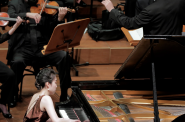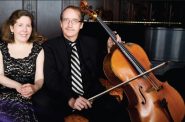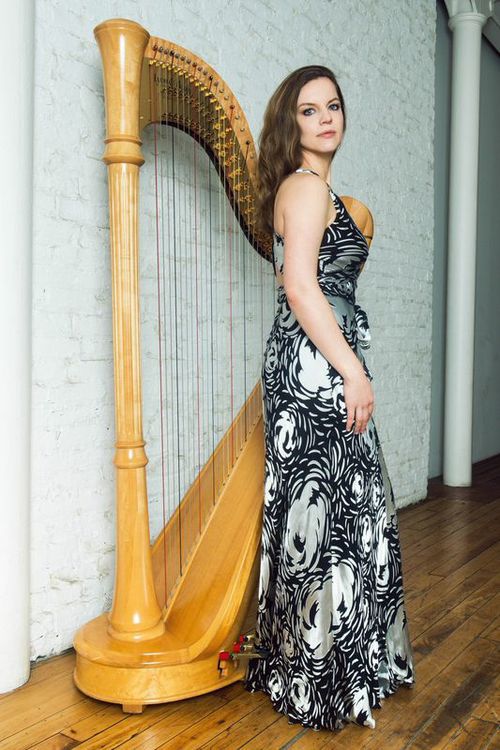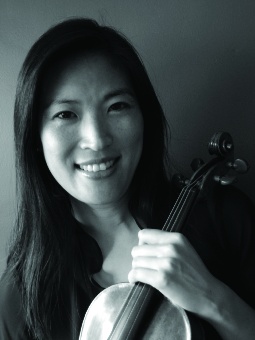The Virtuosos Among Us
Milwaukee Musaik showcases great musicians usually in the background.
Milwaukee Musiak completes its second season this next Monday at Wisconsin Lutheran College with another concert blending wind and string players in an intimate chamber setting. The playful title of the concert “Yes, Yes Nonets!” refers to music written for an ensemble of nine players. Think of two established formats — the string quartet and the woodwind quintet. The mix is improved by exchanging one of the two violins with a double bass – a better partner for the bassoon. The five wind players actually include a brass interloper, the French horn. This quintet form has been a staple for wind instruments because of the unique timbre of each instrument. Clarinetist William Helmers observes that, “The key is that the wind quartet has to be able to form a unified texture and sound, but also to allow individual instruments to sound. The instruments also appear in various combinations, creating a special palette of colors.”
Primarily Milwaukee Symphony members, the performers include players involved in Philomusica Quartet, Prometheus Trio, Present Music, Chamber Music Milwaukee, the Washington Island Music Festival and numerous wind ensemble combinations in individual concerts around Milwaukee. Artists for this concert: Kelsey Molinari, harp; Alexander Mandl, Jeanyi Kim, Dylana Leung, violin; Nathan Hackett, viola; Scott Tisdel, cello; Dan Armstrong, bass; Jennifer Clippert, flute; Meaghan Heinrich, oboe; William Helmers, clarinet; Catherine Chen, bassoon; and Greg Flint, horn.
The benefit of the Milwaukee Musaik model has become obvious to audience and musicians over this second season. Performers in this artist-managed series, especially those deep in a string section or near the back of the stage in a symphony concert are able to stand out as individual players. The result is enhanced by the acoustic of the Schwan Concert Hall, so that more nuanced performances are permitted and appreciated by the listeners.
The evening features three major works:
Maurice Ravel‘s Introduction and Allegro for Harp, Flute, Clarinet and String Quartet (1905) was commissioned as a marketing effort by the Sebastien Erard company to show off its invention, the double-action pedal harp. This harp is able to play in many different keys by using pedals to reset the strings. The result is a tour-de-force for the harp and one of the best of Ravel’s chamber works. Harpist Molinari will be featured. Mandl observes that “anything that Kelsey plays sounds easy to me, because she is such a marvelous harpist.” Watch her feet for this performance, as the pedal action feature was a key target of the company’s commission.
Mandl says the role of the strings in Ravel’s composition is to blend with and enhance the sound of the harp. “Poly-metering creates a blur between the instruments and creates a resonance for the strings. I’ve never plucked so fast in my life. This creates a swirl effect in the strings themselves.”
Louise Farrenc‘s Nonet in E-flat major, Op. 38 (1849) has received little attention since her successful career as a composer and conservatory professor in 19th century Paris. Farrenc learned composition from Anton Reicha, who set the standard for wind quintets. Helmers finds Farrenc’s work every bit as good as those of Reicha. This work allows access to the individual players – exploiting each instrument in turn – especially in the variations. There are “great fireworks for violin” in the work, Helmers observes. Generally, he noted, “We don’t have a chance to hear a section player.” But when Leung played for rehearsal, “she sounded fantastic.”
Critic Brian Reinhart of MusicWeb International writes that “this is very striking music, original in its language and distinctively Farrenc’s own. The first movement ends with a surprising violin cadenza. The andante is a set of variations with colorful solo licks for all nine players. The scherzo simply rocks with a buoyant good cheer. The finale is rather more conventional than the inner movements, in that I suppose it keeps its enthusiasm a bit more buttoned-down, but there’s still pleasure here.”
I often associate serenades with Mozart’s works. As such, they were pleasantly constructed pieces meant more for an outdoor soirée than a concert hall. Although Brahms has written a more sophisticated piece, critic Roger Dettmer finds the Serenade “basically a dance work…While concert-hall decorum forbids our dancing in the aisles, there’s really no way to keep one’s feet from tapping in time with the music.”
Both Farrenc and Brahms were encouraged to write their works by Joseph Joachim, a super-star violinist at the time. As a result, both contain virtuoso roles for violin. The ensemble will rotate this responsibility, featuring Leung in the Farrenc and Kim in the Brahms. Of course, the Ravel will feature harpist Molinari. Other than these roles, the evening is an opportunity to hear individual players exposed and combined playing music that is intimately accessible to the audience.
“Yes, Yes Nonets!” will be performed Monday, May 22, 2017 at 7:30 p.m. at the Schwan Concert Hall, 8815 W. Wisconsin Ave., at the Wisconsin Lutheran College. $25 general seating tickets may be purchased on-line. Students with ID may purchase tickets for $10 at the door. Free parking is available in a new garage just east of Schwan Concert Hall.
Preview
-
PianoArts Festival Features Rising Stars
 May 28th, 2024 by Michael Barndt
May 28th, 2024 by Michael Barndt
-
Four Nations Ensemble Goes For Baroque
 May 13th, 2024 by Michael Barndt
May 13th, 2024 by Michael Barndt
-
Mozart on Prospect Avenue
 May 9th, 2024 by Martha Brown
May 9th, 2024 by Martha Brown






















THANKS FOR THE NICE PREVIEW!